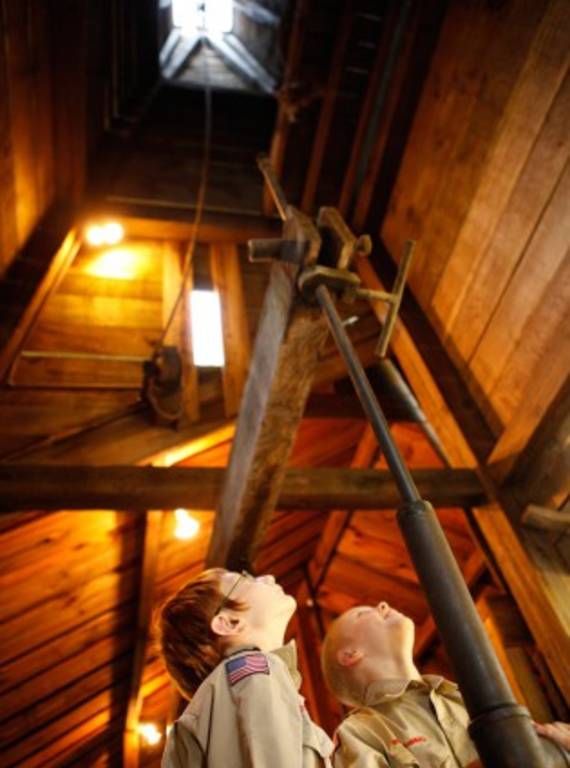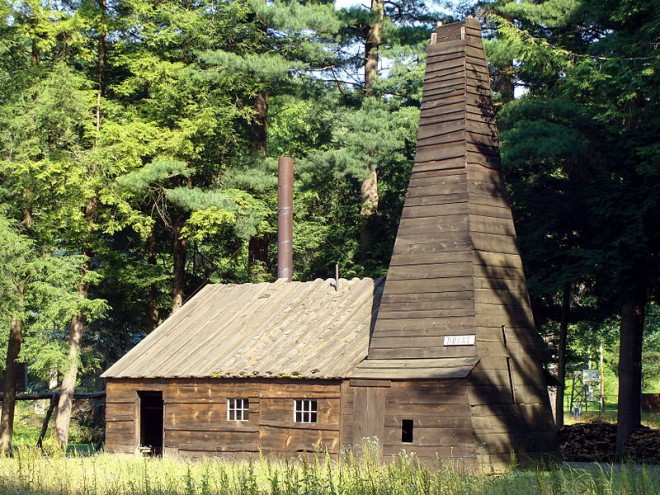This story is part of our series on national heritage areas, the large lived-in landscapes managed through innovative partnerships to tell America’s cultural history.
In August 1859, Edwin L. Drake drilled the first successful commercial oil well in a natural oil seep on the east bank of Oil Creek downstream of Titusville in northwestern Pennsylvania. When he struck oil at the amazingly shallow depth of 89 feet, his well became the centerpiece of America’s first oil boom. Suddenly, more reliable supplies of crude petroleum led to a dramatic expansion in consumer and industrial uses of oil in medicine, lubrication, waterproofing, illumination, heating, and chemical feedstocks.In 2004, Congress established the Oil Region National Heritage Area in the 708-square-mile territory reaching from Titusville downstream to Emlenton. The nonprofit Oil Region Alliance of Business, Industry and Tourism which manages the heritage area will celebrate Oil History Month this August and share the fascinating history that happened here.
Today’s visitors to “The Valley That Changed the World” will find museums, an excursion railroad, well-preserved Victorian architecture, warm hospitality, casual dining and lodging, and four seasons of outdoor recreation in beautiful forested valleys.

Two Boy Scouts peer to the top of the derrick at the Drake Well Museum.
Photo © Heather Mull.The “Mecca” of the oil industry is the state-owned Drake Well Museum and Park where a full-scale operating replica of an early engine house sits over Edwin Drake’s original oil well hole, a National Historic Landmark. The adjacent museum and archives library was recently updated with interactive exhibits, orientation theatre, and fascinating photography by John Mather and others who documented life in the early oilfields and communities near Oil Creek valley. Museum grounds have oil transportation equipment, pumpjacks of every design, early portable drilling rigs, a drilling rig manufactured by Oilwell Supply Company, picnic pavilions, horseshoe pits, and a special stretch of Oil Creek for delayed-harvest trout fishing.
Visitors can learn about the sometimes lucrative, often dangerous, and always muddy realities of life in the early oil patch by exploring the Pumpjack Museum in Emlenton and the Venango Museum of Art, Science & Industry in Oil City or riding as a passenger on board the Oil Creek & Titusville Railroad.
Other attractions include:

Bicyclists enjoy the Erie to Pittsburgh Trail within the Oil Region National Heritage Area.
Photo © Heather Mull.- Oil Creek State Park. This 7,000+-acre parcel preserves the lush green hillsides where much of the early oil boom occurred. Signs along its hiking and bicycle trails point out relics such as wooden oil storage tanks, building foundations, replicas of oil derricks, and narrow-gauge pipelines. Historic photos on outdoor interpretive panels and at the Petroleum Centre Train Station contrast with today’s natural settings.
- DeBence Antique Music World. This site in downtown Franklin houses the largest collection of mechanical musical instruments in the United States. See and hear antique nickelodeons, music boxes of every size, phonographs, carousel organs, player pianos, orchestrions, and even an automated violin at this unique museum.
- Victorian architecture. Take walking tours with free-standing interpretive panels and self-guided brochures in Emlenton, Franklin, Oil City, and Titusville to see excellent examples of Victorian homes, churches, and commercial buildings and learn about the oil families whose funds constructed them.
- The Erie to Pittsburgh Trail and other excellent recreational sites. Bicyclists can ride through the heritage area along Oil Creek and the wild and scenic Allegheny River. Hikers can enjoy the North Country Trail, along with the challenging 36-mile Gerard Hiking Trail which circumnavigates Oil Creek State Park. Fishermen flock to beautiful Oil Creek, French Creek, and the Allegheny River.
- Other curious sites in the area’s history. See everything from Edwin Drake’s grave in Titusville to a life-size bronze statue of Chief Cornplanter of the Seneca Indian Nation in Oil City to an old vaudeville house restored into a modern theater in Franklin.
Celebrations of Oil History Month include Oil City’s Oil Heritage Festival and Titusville’s Oil Festival, featuring a public open house on August 9 at the childhood home of American journalist Ida Tarbell who authored “The History of the Standard Oil Company” and biographies of major historical figures.
Learn more about the heritage area and plan your trip to the original oil country at www.oilregion.org.
